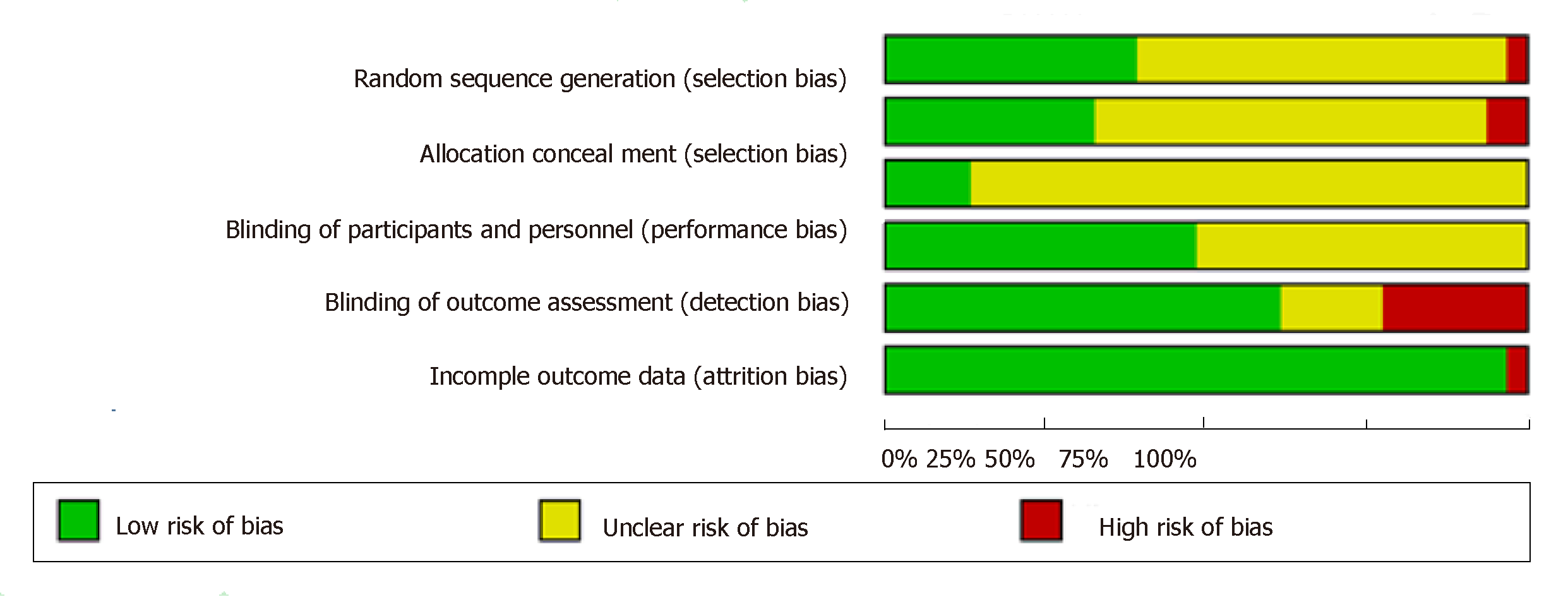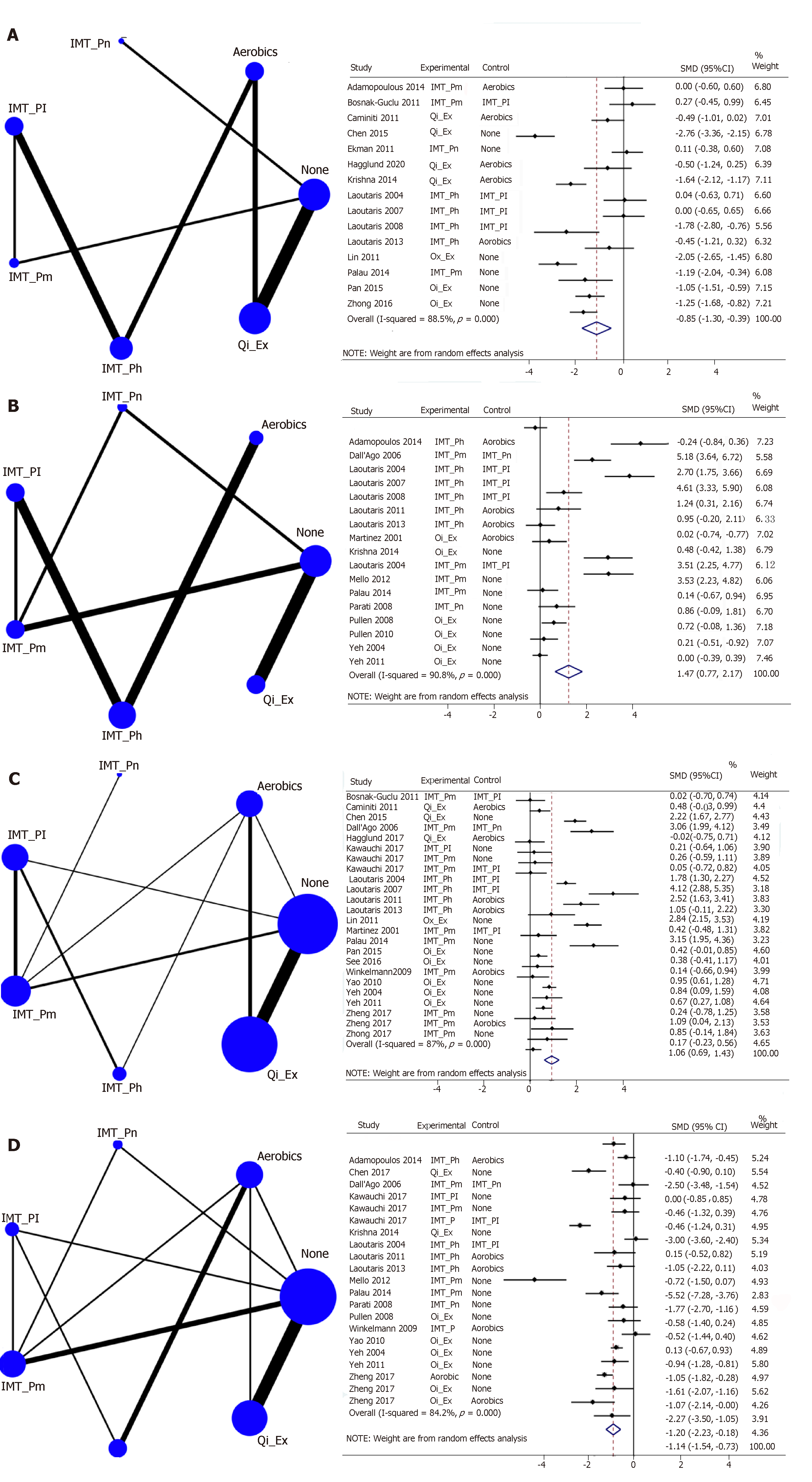Copyright
©The Author(s) 2019.
World J Clin Cases. Sep 26, 2019; 7(18): 2760-2775
Published online Sep 26, 2019. doi: 10.12998/wjcc.v7.i18.2760
Published online Sep 26, 2019. doi: 10.12998/wjcc.v7.i18.2760
Figure 1 Flow diagram of the study selection process.
Figure 2 Risk of bias assessment of included studies
Figure 3 Models and forest plots of respiratory training interventions on measure outcomes.
A: The outcome of heart rate; B: The outcome of VO2 peak; C: The outcome of 6-minute walking distance test; D: The outcome of MLWHFQ. IMT_Pn (inspiratory muscle training without pressure or < 10% maximal inspiratory pressure, MIP), IMT_Pl (inspiratory muscle training with low pressure, 10%-15% MIP), IMT_Pm (inspiratory muscle training with medium pressure, 30%-40% MIP), IMT_Ph (inspiratory muscle training with high pressure, 60% MIP or MIP plus aerobics), Aerobics (aerobic exercise or weight training), and Qi_Ex (tai chi, yoga, and breathing exercise)
Figure 4 SUCRA-based rankings (%) of respiratory training interventions.
IMT_Pn (inspiratory muscle training without pressure or < 10% maximal inspiratory pressure, MIP), IMT_Pl (inspiratory muscle training with low pressure, 10%-15% MIP), IMT_Pm (inspiratory muscle training with medium pressure, 30%-40% MIP), IMT_Ph (inspiratory muscle training with high pressure, 60% MIP or MIP plus aerobics), Aerobics (aerobic exercise or weight training), Qi_Ex (tai chi, yoga, and breathing exercise), HR (heart rate), peak oxygen uptake (VO2 peak), 6-minute walking distance test (6MWT), and MLWHFQ (Minnesota Living with Heart Failure questionnaire) score.
- Citation: Wang MH, Yeh ML. Respiratory training interventions improve health status of heart failure patients: A systematic review and network meta-analysis of randomized controlled trials. World J Clin Cases 2019; 7(18): 2760-2775
- URL: https://www.wjgnet.com/2307-8960/full/v7/i18/2760.htm
- DOI: https://dx.doi.org/10.12998/wjcc.v7.i18.2760












